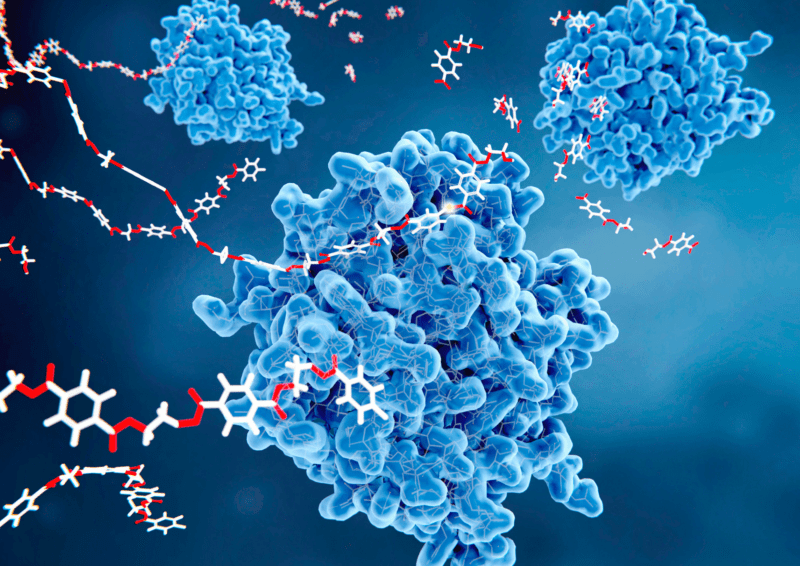Protein Binders to Degraders: Navigating the Route – Sygnature Discovery
So, you have a protein of interest (POI) you want to degrade, and a small molecule binder ready to turn into a heterobifunctional protein degrader.
Great! But what comes next?
First things first – two critical questions…
The first question: Do we really need a POI degrader?
These large and complex molecules exist beyond the Rule of 5 (bRo5) space, which poses significant challenges in terms of pharmacokinetics (PK).
The second question: Is it worth the effort to address these challenges?
If direct/catalytic inhibition delivers therapeutic benefits, the answer is probably no. However, in cases where pharmacological inhibition does not provide an effective desired phenotype seen with a genetic knockdown or knockout or your protein displays a scaffolding, rather than a catalytic function, then a degrader offers a clear solution to an otherwise obstinate problem.
How can we best convert the POI binder to a heterobifunctional degrader?
By using high throughput chemistry, a POI binder can be efficiently converted into a prototypical heterobifunctional protein degrader.
The CHARMED platform offers pre-assembled E3 recruiters combined with a diverse range of linkers, ready to attach to your POI binder. This is an efficient method to quickly assess hundreds of compounds for their potential to degrade your POI.
This novel approach addresses two key questions:
- Can a heterobifunctional molecule form a productive complex and lead to protein degradation?
- What structure-activity relationships (SAR) can we learn from linker chemistry, and how does it affect physicochemical properties?
After assembly and purification, the putative degraders are promptly screened for their degrader. This can be achieved by using the Jess systems to investigate protein loss. It is also helpful to consider the kinetics of ternary complex assembly, optimising linkers that offer the most promising profiles.

But what about optimising the DMPK?
Oral absorption can be complicated due to heterobifunctional protein degrader’s physiochemical properties. However, acceptable PK is achievable! Despite the high molecular weight and more hydrogen bond acceptors and donors than small molecules, it’s possible to achieve gut-permeable compounds by maintaining lipophilicity in a reasonable range and minimising efflux. Due to the flexibility of heterobifunctional protein degraders and their potential to form intramolecular bonds, some of the polar surfaces can be buried, increasing permeability. Understanding this can be crucial in developing an orally bioavailable degrader.
Where to start testing?
The CHARMED platform employs high throughput chromatographic assays to quickly screen heterobifunctional protein degraders since standard DMPK assays may not work for bRo5 compounds due to poor solubility or unsuitable dynamic range. Supercritical fluid chromatography is used to determine the exposed polar surface area (EPSA), and lipophilicity is rapidly characterized using the Chromatographic LogD assay.
Once we establish the potential for gut-permeable compounds, we determine their metabolic stability in hepatocyte incubations to avoid the impact of high levels of hepatic metabolism. We also measure solubility in biorelevant media like FeSSIF to assess their absorption potential. If the heterobifunctional protein degraders show promise, we progress to in vivo PK studies to determine their oral bioavailability. To ensure maximum oral exposure and mitigate against poor solubility, our Form and Formulation group designs vehicles for these studies.
Developing orally bioavailable degraders is challenging but clearly worthwhile in the pursuit for the right therapeutic hypothesis. The CHARMED platform can de-risk the challenges and speed up the path to early in vivo proof of concept. The route ahead may seem daunting, but with the right roadmap, it’s not impossible to navigate.
